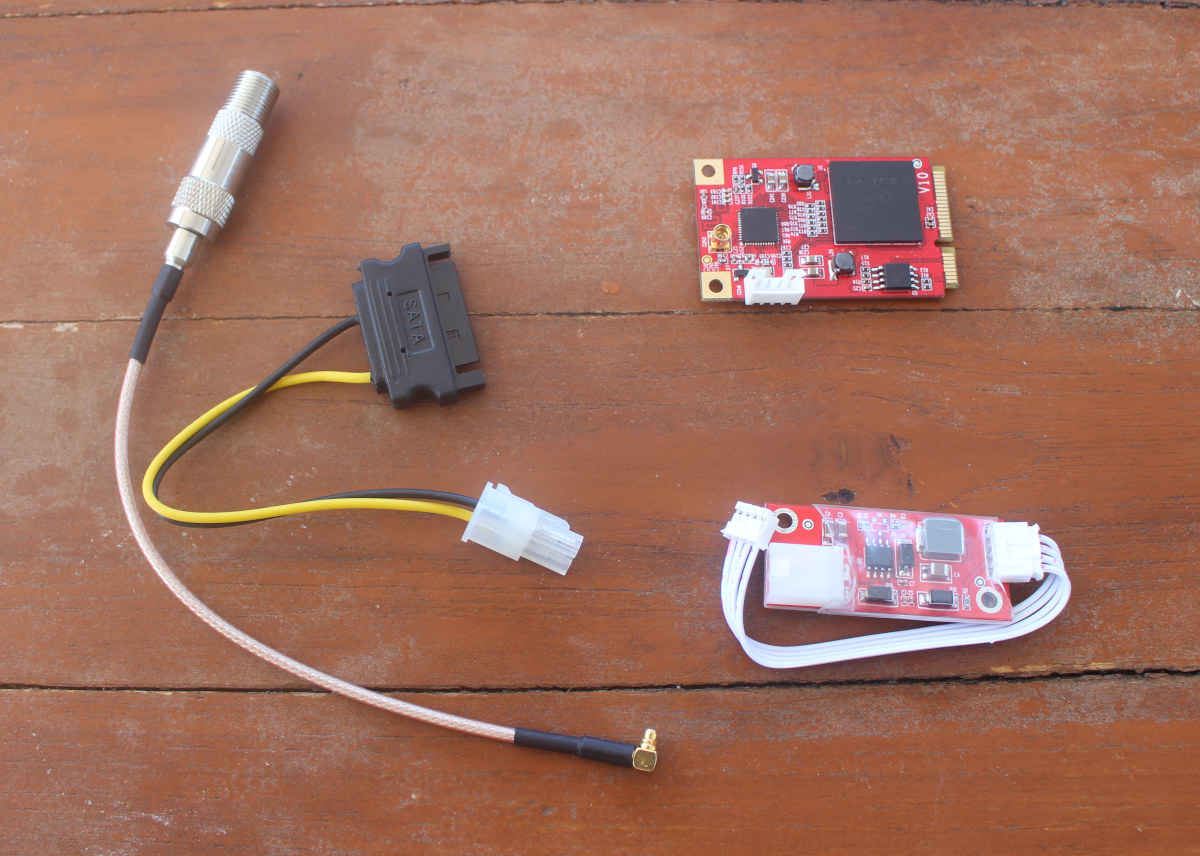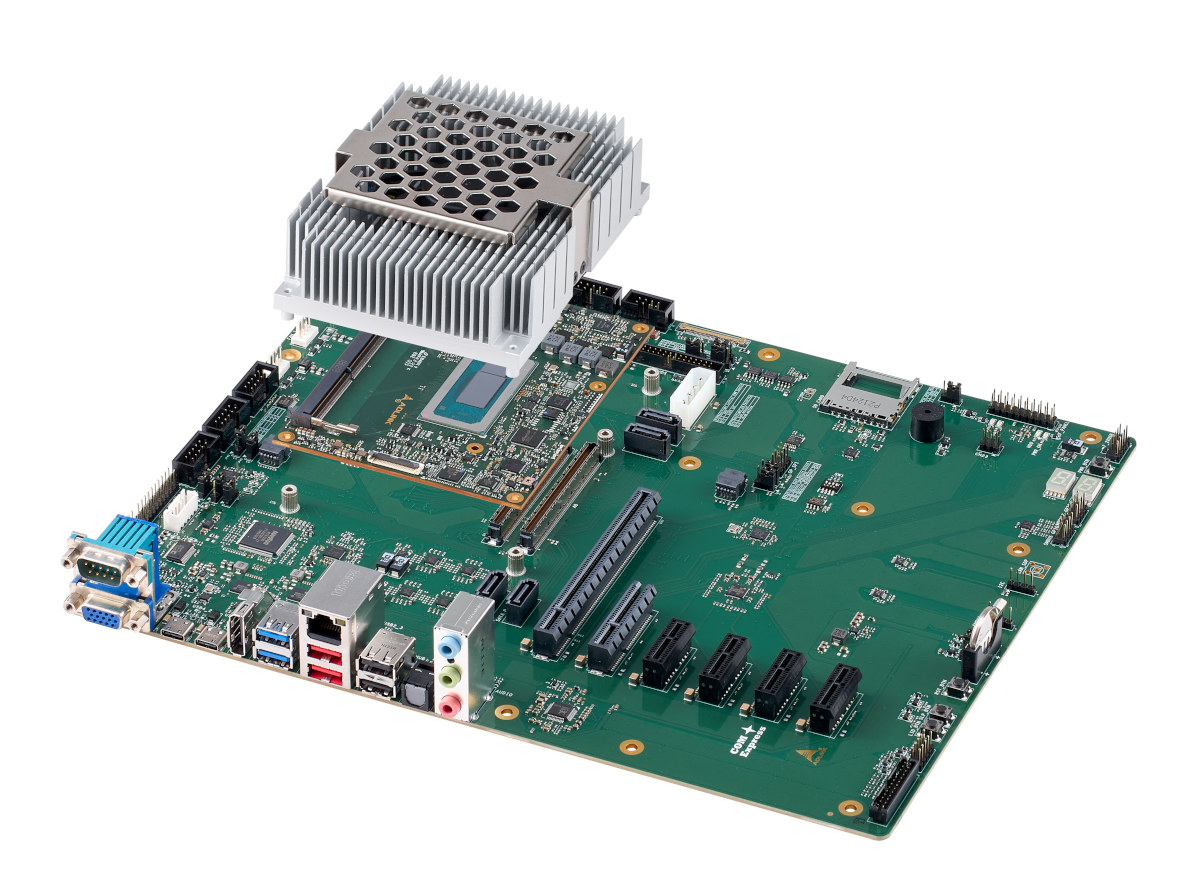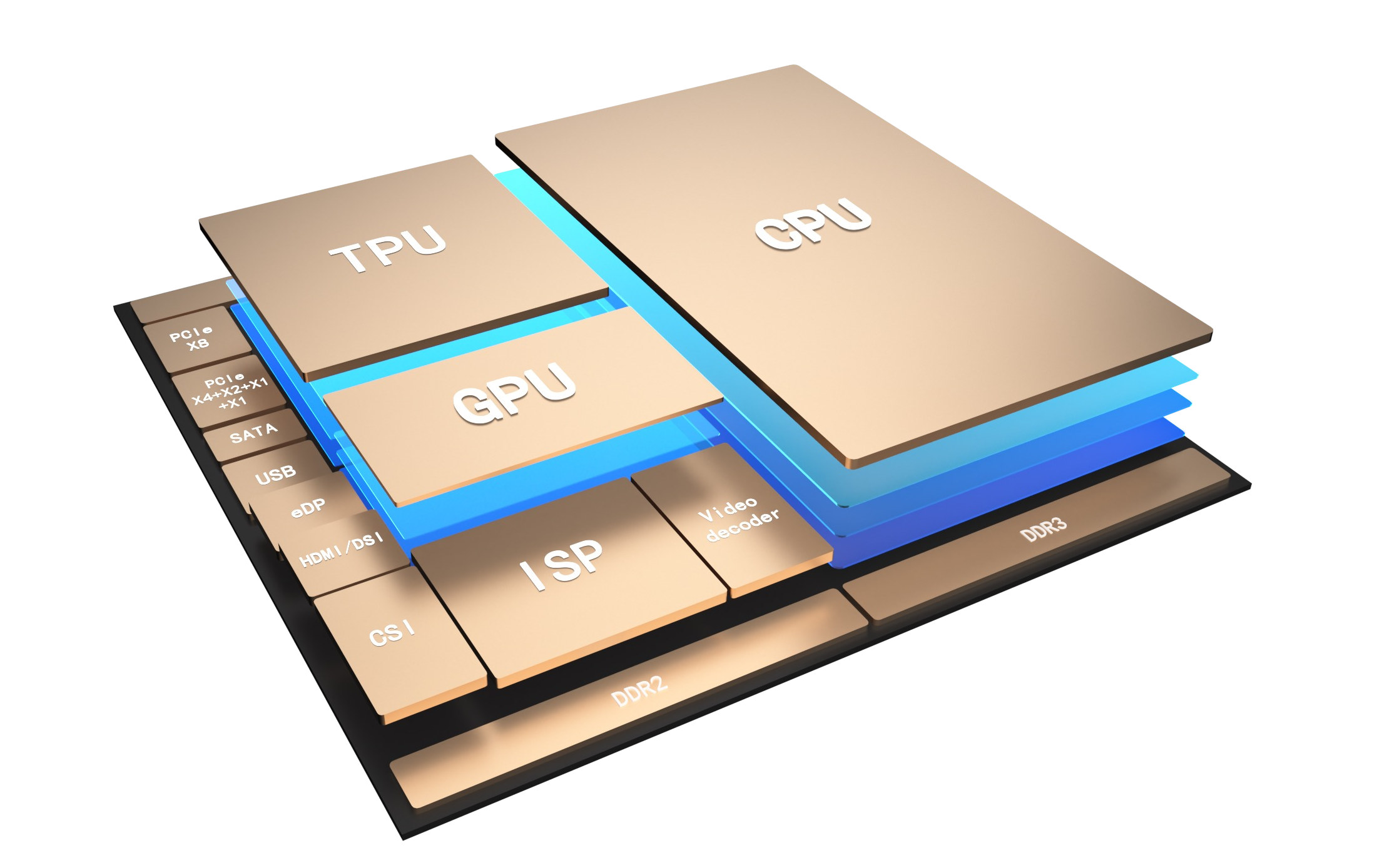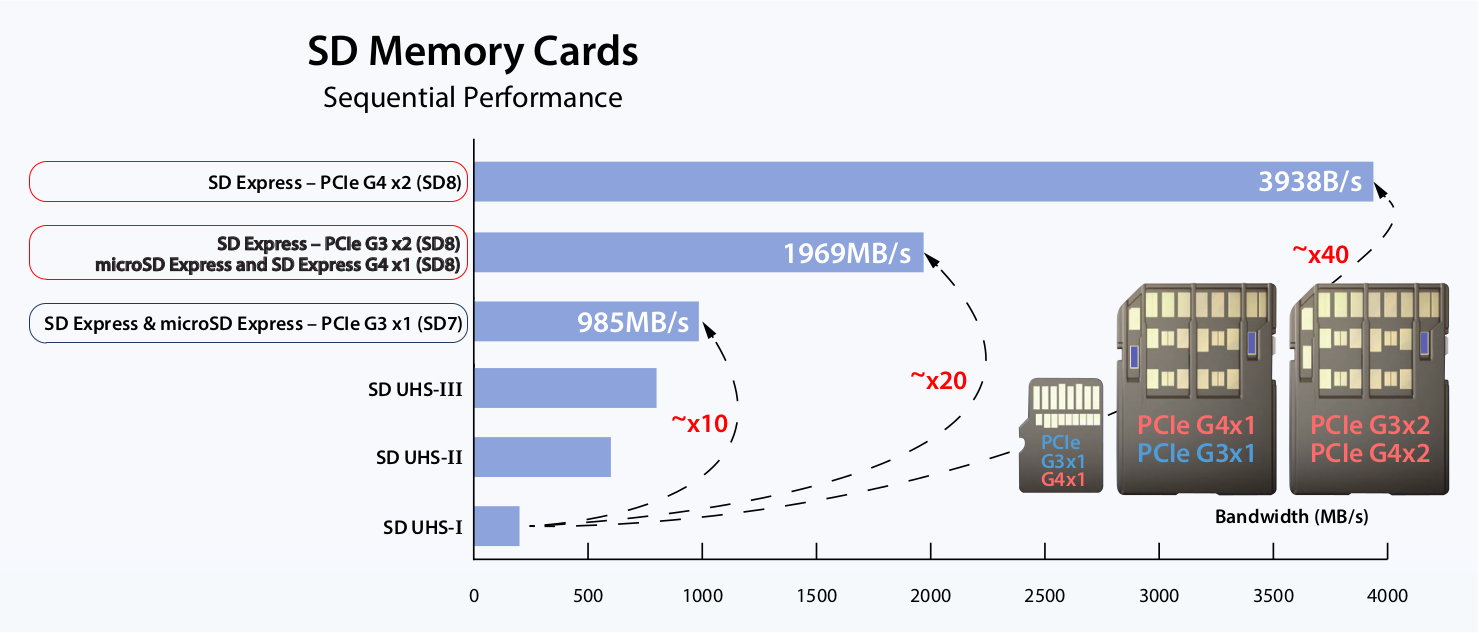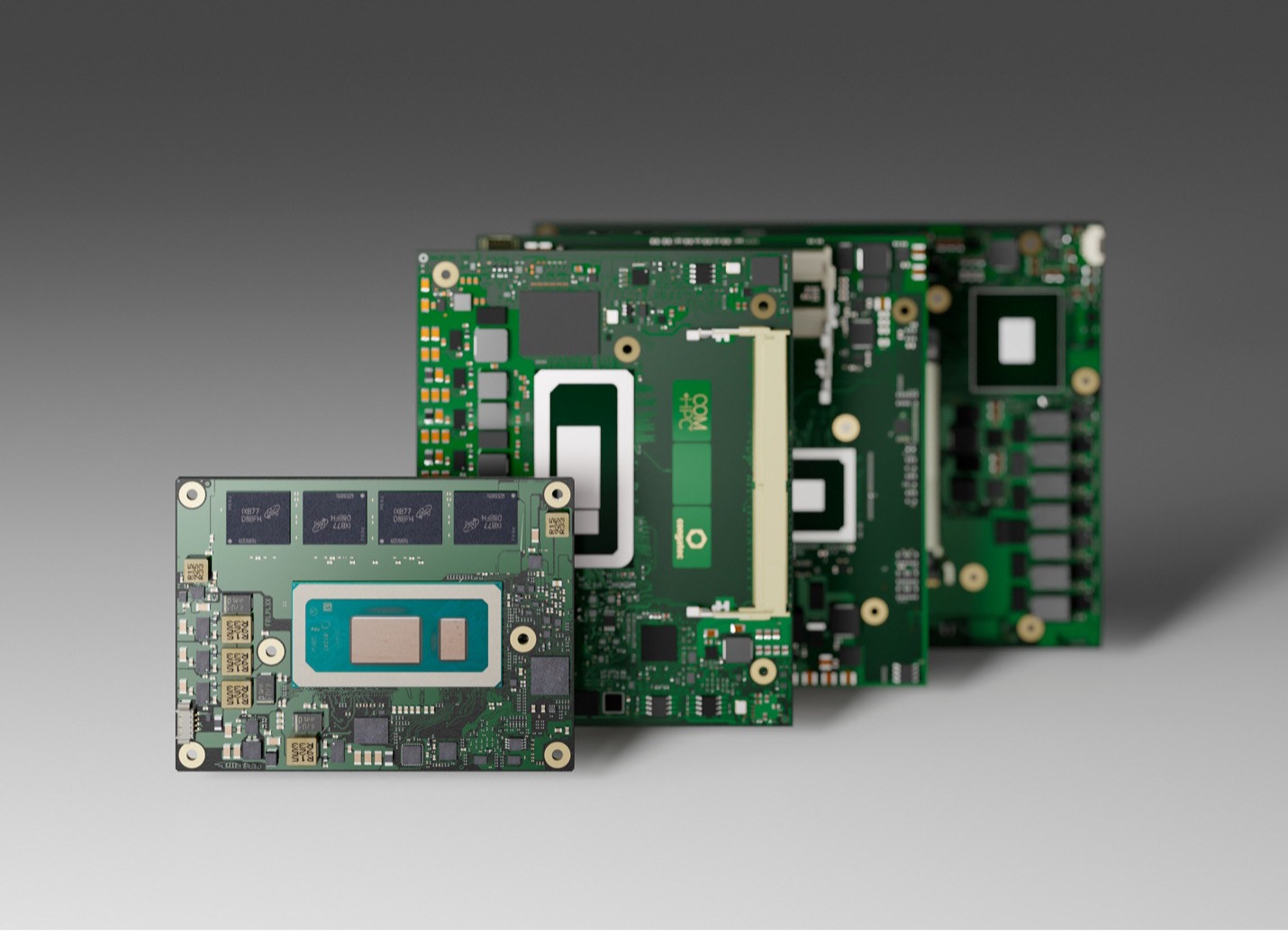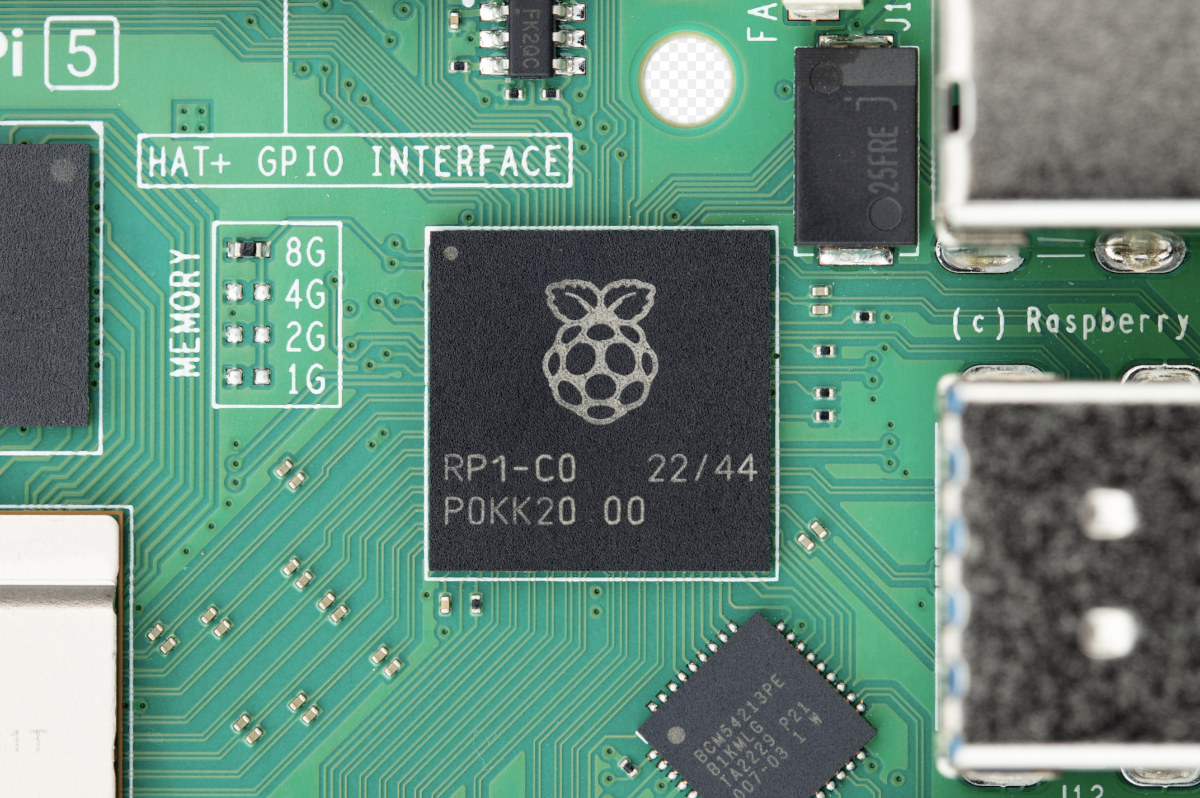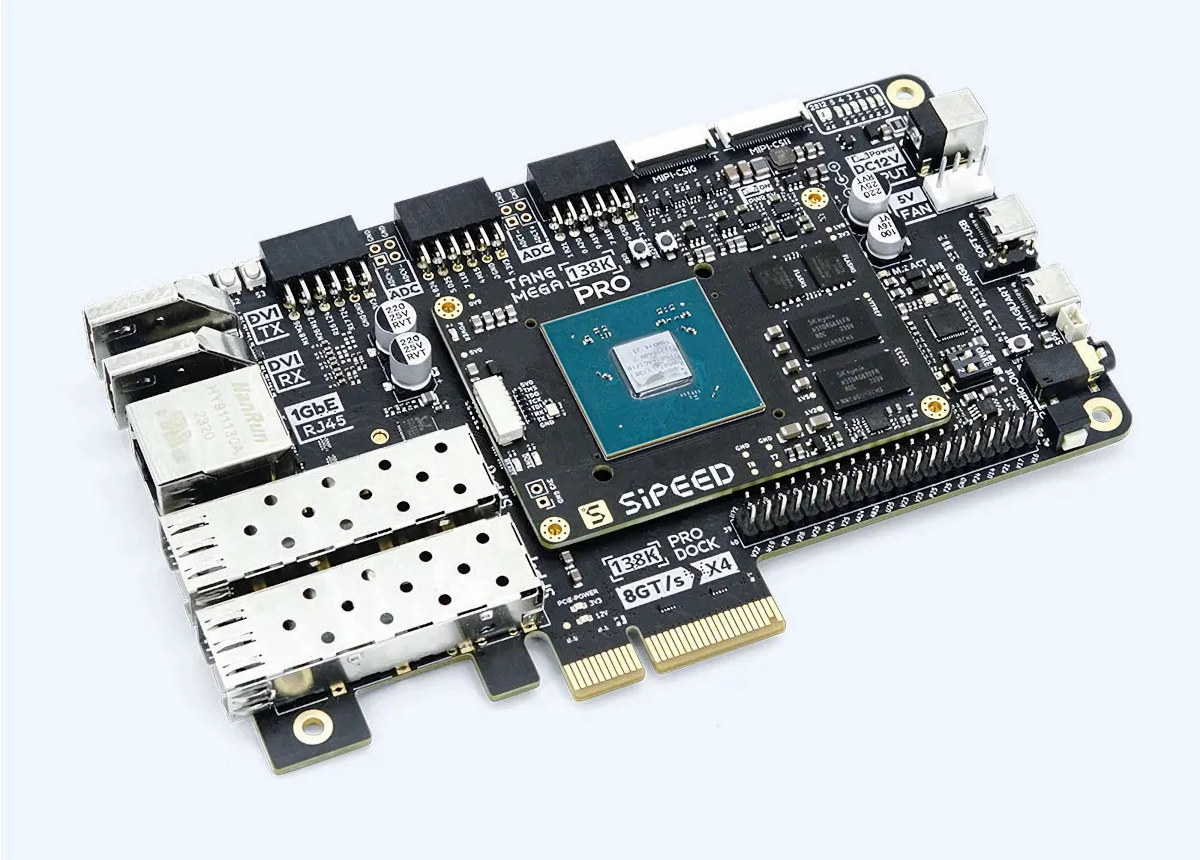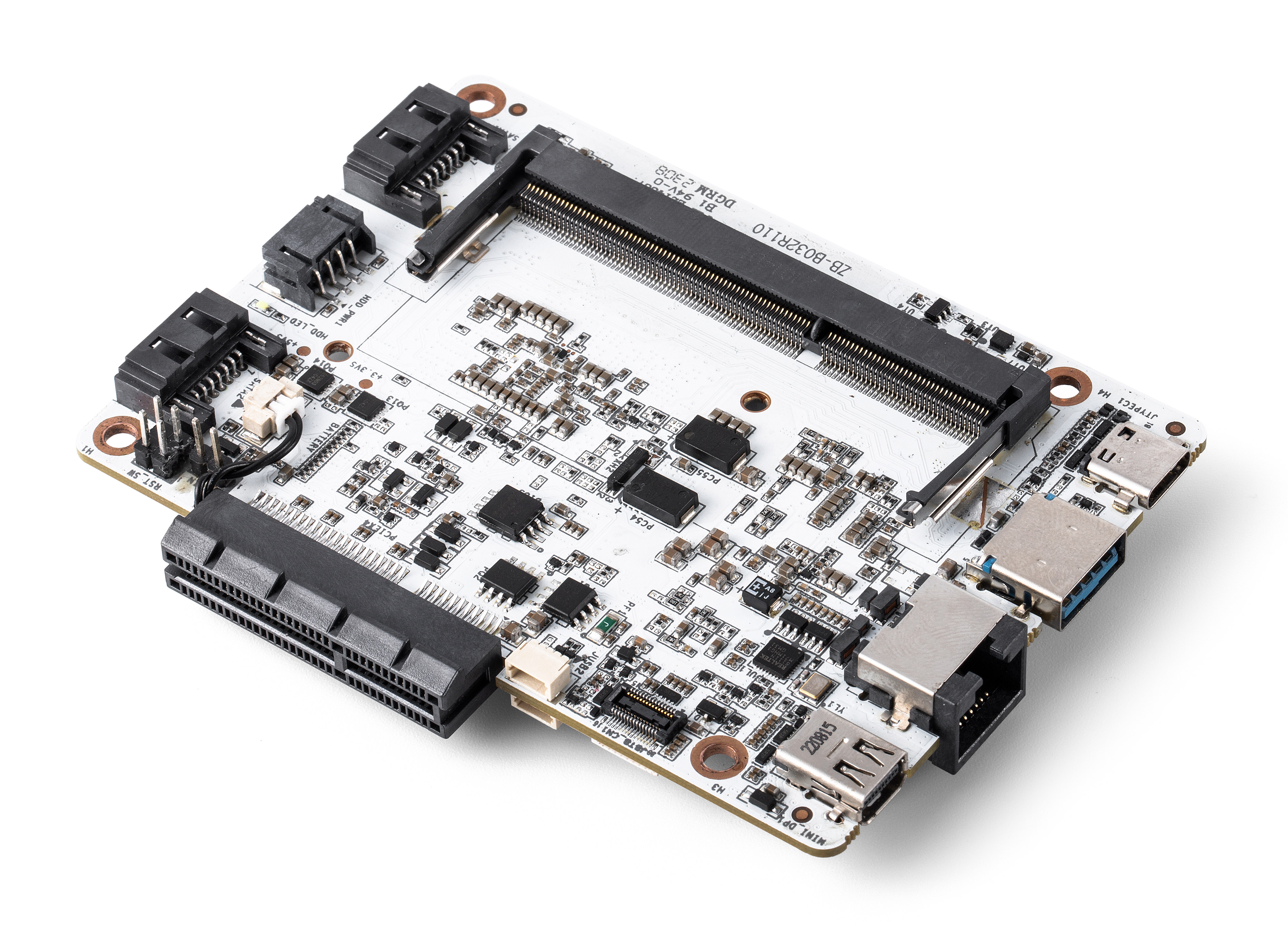The second prize of Giveaway Week 2023 is a TBS7901 mini PCIe DVB-S2X/S2 module designed to be connected to a PC or board with a mini PCIe socket in order to watch, record, or broadcast free-to-air video received from a satellite dish. I received both M.2 and mPCIe DVB-S2X modules last August, but I haven’t had time to test any of those yet. So I’m keeping the M.2 module for my own testing once time permits and will be giving away the mini PCIe module to one of CNX Software readers. The module comes with a coaxial antenna cable, as well as a TBS-7901PW power board and SATA power cable since DVB-S/S2/S2X satellite TV requires 13V and 18V DC as well which will be outputted won’t the power board using the 12V from a PSU. You’ll probably need a Windows machine too since TBS provides Windows drivers for the TBS7901 […]
COM Express development kit ships with Intel Core i3-13300HE or Core i5-13600HE Raptor Lake-P processor
ADLINK has launched an “IoT prototyping kit” based on the company’s Express-RLP COM Express Type 6 module with either an Intel Core i3-13300HE or Core i5-13600HE Raptor Lake-P processor. The module supports up to 64GB DDR5 and the ATX carrier board offers a wide range of interfaces such as 2.5GbE, two SATA ports, DisplayPort, LVDS (or EDP), and VGA video outputs, two USB4 ports, and more. COM Express Type 6 Raptor Lake-P devkit specifications: System-on-Module – ADLINK Express-RLP COM Express Type 6 computer-on-module Raptor Lake-P SoC Intel Core i5-13600HE 4P+8E cores/16 threads processor @ up to 2.7 GHz with 18MB cache, Intel Iris Xe graphics; TDP: 45W (cTDP: 35W) Intel Core i3-13300HE 4P+4E cores/12 threads processor @ up to 2.1 GHz with 12MB cache, Intel UHD graphics; TDP: 45W (cTDP: 35W) System Memory – Up to 64GB (2x 32GB) DDR5 via SO-DIMM sockets Dimensions – 125 x 95 mm (PICMG […]
Sophgo SG2380 – A 2.5 GHz 16-core SiFive P670 RISC-V processor with a 20 TOPS AI accelerator
Sophgo SG2380 is an upcoming 2.5 GHz 16-core RISC-V processor based on SiFive Performance P670 cores and also equipped with a 20 TOPS AI accelerator using SiFive Intelligence X280 and Sophgo TPU that will find its way into a $120 desktop-class mini-ITX motherboard in H2 2024. The RISC-V processor also supports up to 64GB RAM, as well as UFS 3.2 and SATA 3.0 storage, comes with an Imagination GPU for 3D graphics and a VPU capable of 4Kp60 H.265, H.264, AV1, and VP9 video decoding, plenty of interfaces, and the system can manage locally deployed larger-scale LLMs like LLaMA-65B without the need for external NVIDIA or AMD accelerator cards. Sophgo SG2380 RISC-V SoC Sophgo SG2380 specifications: CPU 16-core SiFive P670 (RV64GCVH) 64-bit RISC-V processor @ up to 2.5GHz with RISC-V Vector v1.0, Vector Crypto Cluster configuration – 12x 2.5 GHz performance cores, 4x 1.6 GHz efficiency cores Full RISC-V RVA22 […]
microSD Express memory cards to support up to 2GB/s data transfers
SD Association (SDA) has announced the new SD 9.1 specification that doubles the speed of microSD Express memory card speed up to 2GB/s, defines four new SD Express Speed Classes to ensure guaranteed minimum sequential performance levels, and adds support for multi-stream access and related power and thermal management to assure the guaranteed performance. We first covered the microSD Express cards in 2019 as they were added to the SD 7.0 specification with promises of SSD performance through a PCIe 3.0 interface delivering up to 985MB/s. Over four years have passed since then, and I have yet to write about devices supporting the new standard, but the SD Association is not giving up with the introduction of the SD 9.1 specification that doubles the speed of the microSD Express cards, and full-size SD Express card can even reach close to 4GB/s. More specifically, the maximum speed achievable on microSD Express […]
COM-HPC 1.2 specification released with COM-HPC Mini 95x70mm form factor
PICMG has announced the release of the COM-HPC 1.2 specification adding the COM-HPC Mini form factor that’s about the size of a credit card (90x75mm) or half the size of the next-smallest COM-HPC form factor but still provides access to high-speed interfaces such as PCIe Gen5, USB4, and 10GbE. The COM-HPC “High-Performance Computing” form factor was introduced a few years ago for more powerful CPUs (higher TDP) with support for PCIe Gen4 (the COM Express form factor can’t handle PCIe Gen 4 clock speeds and throughputs well), and until now four sizes were available with COM-HPC Client Type modules measuring 95 x 120mm (Size A) to 160 x 120mm (Size C) and Server Type modules having either 160 x 160mm (Size D) or 200 x 160mm (Size E) dimensions. The COM-HPC Mini brings a smaller (95 x 60 mm) credit card-sized form factor to the COM-HPC standard for applications such […]
Raspberry Pi releases RP1 peripheral controller datasheet and block diagram
The Raspberry Pi 5 was recently introduced with the Broadcom BCM2712 CPU and the RP1 chip handling I/Os designed in-house by the Raspberry Pi just like they did for the RP2 (RP2040) microcontroller, and we now have more details about the Raspberry Pi RP1 including a (draft) datasheet and a block diagram. The RP2040 came out before the RP1 peripheral controller as the design for the latter started 7 years ago with a total R&D budget to develop the Raspberry Pi 5 of around 25 million dollars. While at launch, we knew the RP1 handled some peripherals, doubled USB bandwidth with two separate USB 3.0 hosts, and embedded higher speed MIPI interfaces, it was unclear whether some of the other connections came from the BCM2712 or RP1 chips. But we now do know with the release of the datasheet. Raspberry Pi RP1 key features and specifications: MCU – Dual-arm Cortex-M3 […]
Sipeed Tang Mega 138K Pro Dock features GOWIN GW5AST FPGA + RISC-V SoC
Sipeed has launched another FPGA board part of their Tang family with the Tang Mega 138K Pro Dock powered by a GOWIN GW5AST SoC with 138K logic elements as well as an 800 MHz AE350_SOC RISC-V hardcore unit, and featuring a PCIe 3.0 x4 interface, DVI Rx and Tx, two SFP+ cages, a Gigabit Ethernet RJ45 port, and more. We’ve previously seen companies like AMD (Xilinx) and Microchip produce FPGA SoCs with hard cores such as the Zynq Ultrascale+ family (4x Cortex-A53) or the PolarFire MPSoC (4x 64-bit SiFive U54 RISC-V cores), but it’s the first time I see GOWIN introduce an FPGA + RISC-V SoC, as all the previous parts that came to my attention were FPGA devices. Sipeed Tang Mega 138K Pro Dock specifications: System-on-Module – Sipeed Tang Mega 138K Pro SoC FPGA – GOWIN GW5AST-LV138FPG676A with 138,240 LUT4 1,080 Kb Shadow SRAM (SSRAM) 6,120 Kb Block SRAM […]
ZimaBlade – A $64+ low-profile Intel Celeron board for server applications and more (Crowdfunding)
ZimaBlade is an inexpensive low-profile board based on an Intel Celeron dual-core or quad-core processor and designed for server applications with a low-profile RJ45 Gigabit Ethernet port, two SATA connectors, and a PCIe slot, but not only as the board also comes with display interfaces such as mini DP and USB-C DisplayPort Alt. mode and a few USB ports. It’s not IceWhale Technology’s first venture into portable server board as the company previously introduced the Zimaboard based on Intel Celeron Apollo Lake processors with many of the same features back in 2021. The new ZimaBlade offers more interfaces as well as a complete enclosure instead of just a large heatsink. ZimaBlade specifications: SoC (one or the other) ZimaBlade 3760 – Intel Celeron dual-core processor up to 2.2 GHz (Turbo) with Intel UHD graphics; 6W TDP ZimaBlade 7700 – Intel Celeron quad-core processor up to 2.4 GHz (Turbo) with Intel UHD […]


